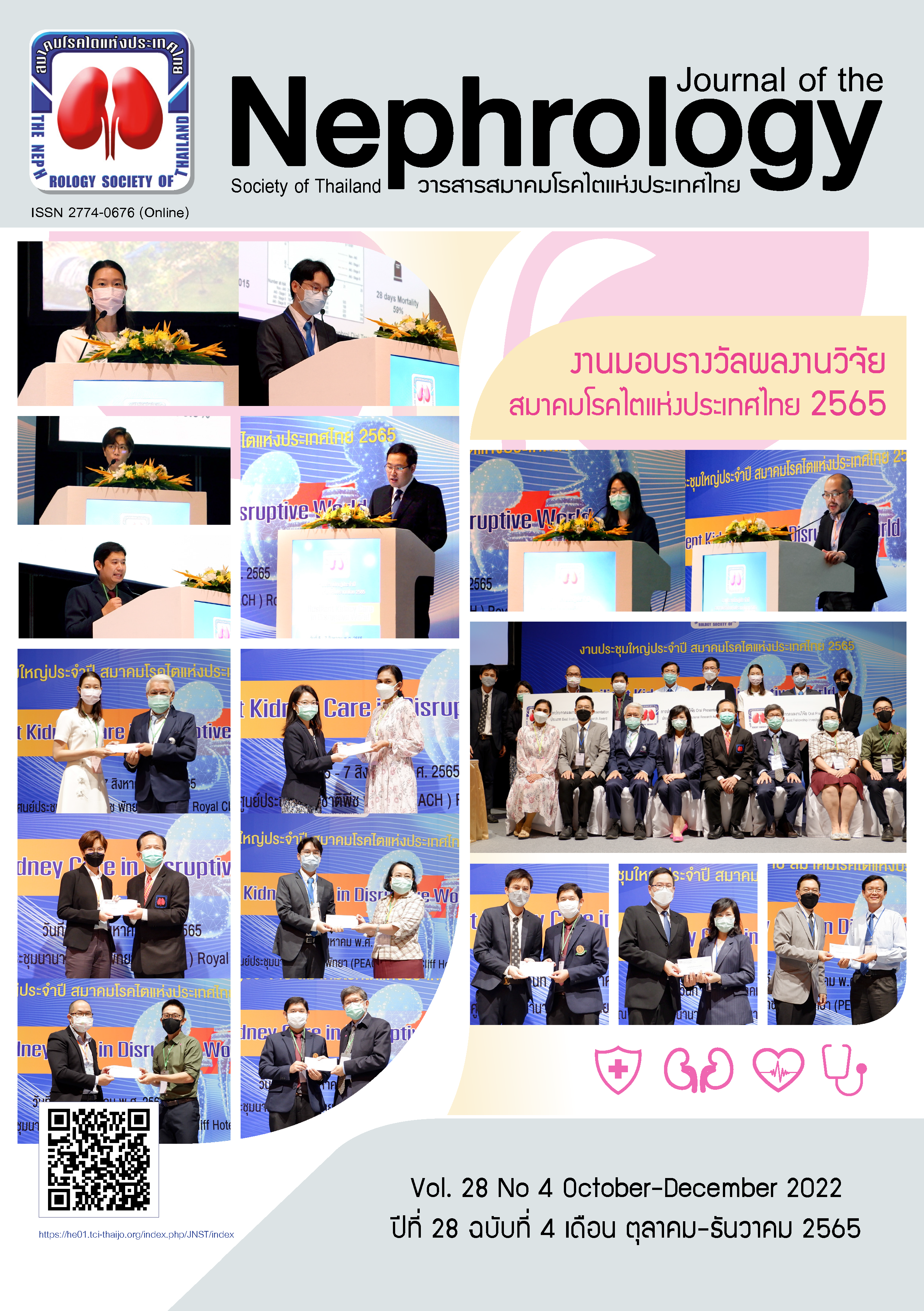The prevalence of high sodium intake among Maehongson population, Thailand
Main Article Content
Abstract
Background: Discretionary and non-discretionary salt are the two-sources of sodium that humans consume. High dietary sodium intake has been shown to be associated with incident hypertension and increase the risk of cardiovascular disease. Therefore, high salt intake contributes significantly to global public health problems and challenges. There is currently no data on the level of salt intake estimated by 24-hour urine collection in the population of Maehongson province in northern Thailand. The present study was aimed to determine the prevalence of high sodium intake among in a population of Maehongson province.
Methods: The data were derived from a cross-sectional survey of 1000 adult subjects (age ≥18 years) from Maehongson province between June 2020 to June 2021. Baseline demographics including age, sex, body mass index, waist circumference, blood pressure, underlying disease, educational level, occupation and monthly income were recorded. Dietary sodium and potassium intake were estimated from 24-hour urine collection. The cut-off level for high sodium intake was the estimated sodium intake >100 mmol/day which was above the level recommended by WHO. The cut-off level of inadequate potassium intake was the estimated potassium intake <90 mmol/day (3,510 mg).
Results: Eight hundred twenty-two participants (82%) provided the 24-hour urine sample and were included in the analysis. The mean age was 50.7±12.26 years. Thirty five percent of the participants were male. The prevalence of high sodium intake was 79%. The estimated mean total sodium intake from 24-hour urine collection was 162.11±81.13 mmol/day (3728.63±1866.01 mg/day) which was equivalent to 9.48±4.74 g of salt. The estimated mean potassium intake was 47.61±20.35 mmol/day (1861.67±795.57 mg/day). The ratio of Na:K (mg/mg) was 2.18. ± 1.14. Higher prevalence of high sodium intake was observed among overweight (BMI≥ 25 kg/m2) (74.3%) and obese (87.1%) participants compared to those with normal BMI (P=0.001).
Conclusion: High prevalence of excess sodium intake was observed in the majority of Maehongson population. The estimated sodium intake was twice the highest level recommended by WHO. Inadequate potassium intake was also observed. Thus, public health efforts in reducing sodium intake and increasing potassium intake are essential in the prevention of hypertension and cardiovascular disease.
Article Details

This work is licensed under a Creative Commons Attribution-NonCommercial-NoDerivatives 4.0 International License.
This article is published under CC BY-NC-ND 4.0 license, which allows for non-commercial reuse of the published paper as long as the published paper is fully attributed. Anyone can share (copy and redistribute) the material in any medium or format without having to ask permission from the author or the Nephrology Society of Thailand.
References
N/A


